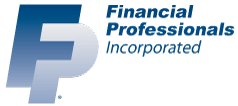2015 2nd Quarter Commentary
Choosing between Certainty and Uncertainty
Since the financial meltdown in 2008, the Federal Reserve has instituted 2 major policies. The first policy was to lower the Federal Funds interest rate to virtually zero and keep it there. The Fed has kept interest rates between 0% and 0.25% for the last six years. To keep interest rates this low for this long is unprecedented.
The second policy was to establish “Quantitative Easing” which was a Federal Reserve program to regularly purchase US Treasury bonds in order to prop up the price of those bonds. Eventually, the Fed got to the point that it was purchasing $85 Billion of our own treasury bonds per month.
This brings us to a point of certainty. The one thing everyone has known for certain since the two policies were put in place is that they could not be sustained indefinitely. Consequently the uncertainty was how the policies were going to come to an end. Ben Bernanke was Fed Chairman when both policies were initiated. He spent his remaining time as the Chairman of the Federal Reserve hinting about how he was going to bring these two policies to an end. However, they were both still in place when he resigned in January of 2014.
When Janet Yellen succeeded Ben Bernanke and took over as Head of the Federal Reserve, she confidently announced that she was going to bring the monthly Treasury purchases (“Quantitative Easing”) to an end by reducing the monthly purchase of treasuries by $10 Billion per month until the purchases were zero. She started the reduction of Treasury purchases in January 2014 and, true to her word, by October of 2014 the Federal Reserve purchases were reduced to zero and “Quantitative Easing” had come to an end. The $4 Trillion of additional Treasury bond purchases from 2009 to 2014 was unprecedented and everyone was extremely worried about the effect of ending the program. However, because Chairperson Yellen had announced her strategy and then stuck with it, she added certainty to the markets where there had previously been fear. As a result, the winding down of the Fed’s Treasury purchases had virtually no negative effect, proving that when participants in the economy and markets know what to expect, we can work our way through the process and avoid turmoil.
This contrasts sharply to the strategy of the Federal Reserve in regard to raising interest rates. Not only has the Federal Reserve Board not announced a strategy for how they will increase interest rates, they have made a habit of speculating about it in public. These off-the-cuff comments often have short term effects on bond and stock prices that can be dramatic. Consequently, as the June 17th Federal Open Market Committee meeting approached we saw a dramatic slowdown in stock and bond trading as buyers waited to see if the Fed would raise interest rates. Historically, volatility has been the best indicator of trading activity. The more trading activity you have the greater the volatility and the less trading activity you have the lower the volatility. As it turns out, the period from January 1, 2015 through the date of the Federal Open Market Committee Meeting in June was the period of lowest volatility for the last 100 years.
In our opinion, nudging the interest rate up 0.25% would actually stimulate economic activity as people thinking of obtaining or refinancing mortgages would begin to move in anticipation of interest rates going higher. We believe if the Fed announced it was going to raise interest rates by a small amount (say 0.25% to 0.5%) every 6 months over the next 4 years until the Fed fund rate was back up to 2% to 4%, it would increase certainty and create a stable economic environment for investors and businesses. It would have a calming effect just to know that there is a plan. It certainly worked with the winding down of the Treasury Bond Purchasing Program. There’s no reason the same disciplined strategy shouldn’t work with interest rate hikes.
Sources: Wall Street Journal, Fast Track, CNBC, Federal Reserve Press Conference Manuscript.
These are the opinions of Financial Professionals, Inc. and not necessarily those of Cambridge, are for informational purposes only, and should not be construed or acted upon as individualized investment advice.
